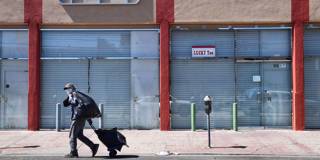Economic growth will eventually return. But its engines will not be the same as before the pandemic. The sooner policymakers recognize this and develop targeted economic-support strategies – which must include a heavy dose of structural reform – the faster, stronger, and more resilient the recovery will be.
BASEL – In the first several months of the COVID-19 crisis – the acute phase – the main economic fallout was a liquidity crunch, which governments countered with aggressive monetary and fiscal stimulus. But now, as the pandemic has dragged on, the crisis is moving to a new phase, marked by significantly higher solvency risks for firms. Policymakers face a dilemma: How can they support needy businesses without propping up those that are not viable?

BASEL – In the first several months of the COVID-19 crisis – the acute phase – the main economic fallout was a liquidity crunch, which governments countered with aggressive monetary and fiscal stimulus. But now, as the pandemic has dragged on, the crisis is moving to a new phase, marked by significantly higher solvency risks for firms. Policymakers face a dilemma: How can they support needy businesses without propping up those that are not viable?